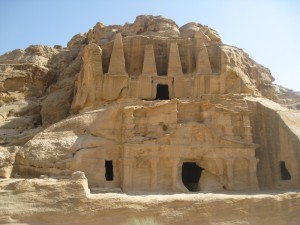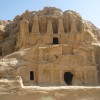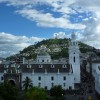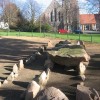Photo of the Day: 12-Sided Inca Stone
| by Jason | No Comments » | Photo of the Day
Peru, more specifically Cusco (Cuzco) Peru is most famous for it’s connection to the great Inca empire. Today, the city still stands atop an ancient stone work built by the Incas. A great example of their craftsmanship can be found within Cusco city. This stone is referred to as the 12-sided Inca stone. The Incas used several styles of stone work, this one emphasizes the carving of a rock to fit amongst other rocks perfectly without using mortar. The perfect alignment of the rocks is some of the most impressive stone work we have ever seen.



















